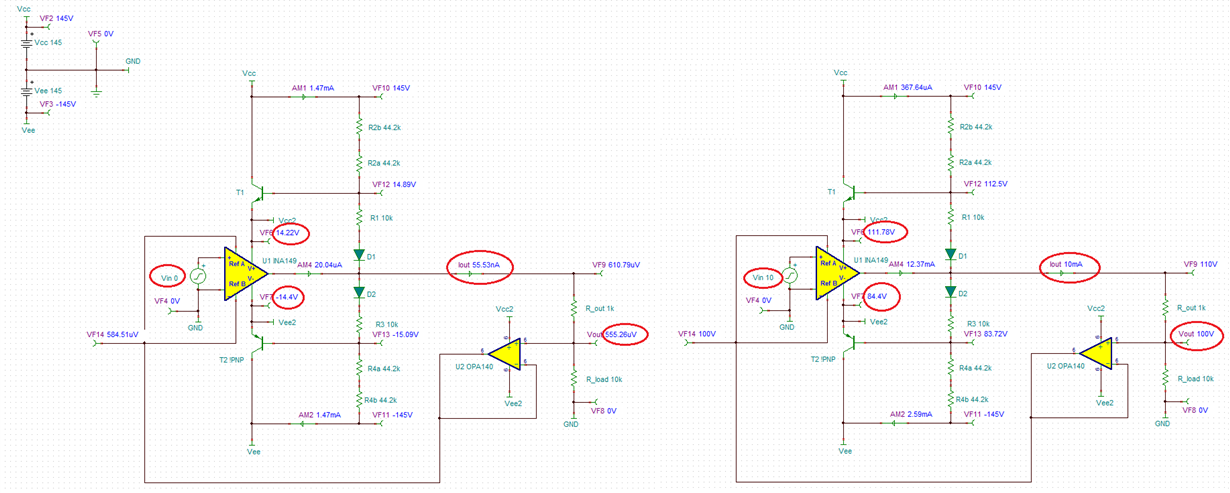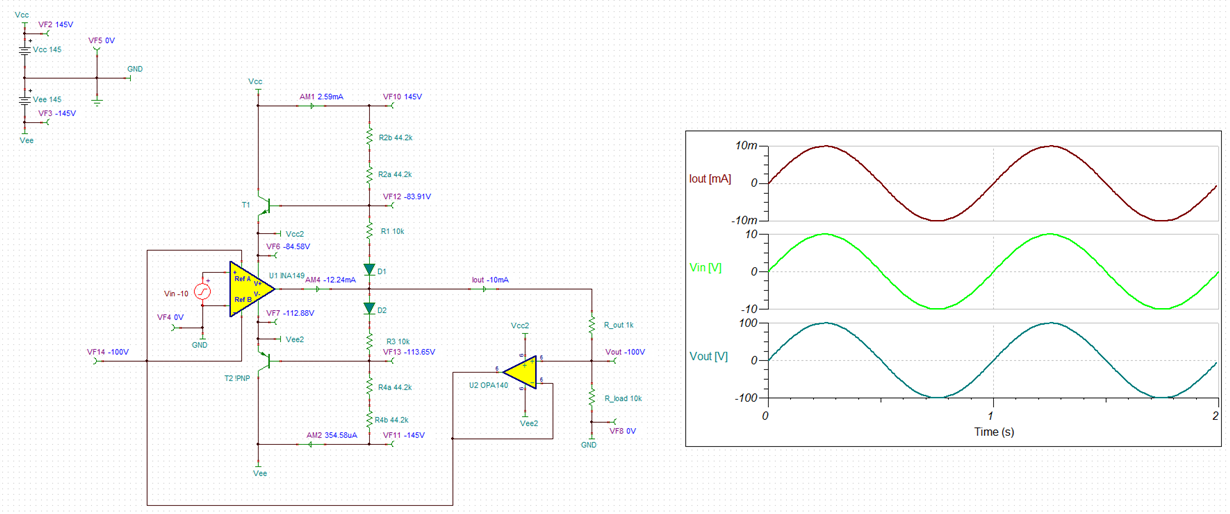Other Parts Discussed in Thread: INA149
Hello there,
I have a question regarding this application note:

It introduces a bidirectional current source, which can accept voltages over +- 100 V. As an example, a 10k resistor is used and the current set for it is 10 mA. In the end circuit in Fig 4:
An OPA140 op amp is used in voltage follower configuration. I dont understand the following thing:
In order for 10 mA to flow through the 10k resistor, a voltage drop of 100 V is needed across the 10k resistor. OPA140 maximum voltage range is way below that. How is this circuit functioning, what am I missing? Lets assume VEE = GND = 0 V and VCC >= 100 V. Also, is this voltage follower really necesarry in the circuit, since the INA149 Ref A and Ref B inputs are high impedance?
I would appreciate all help.




